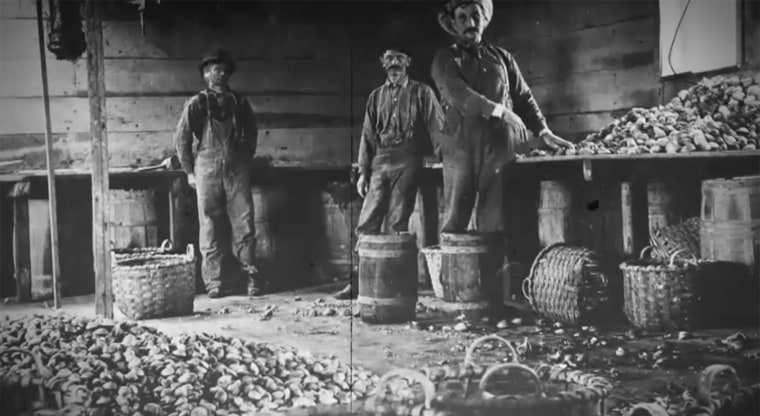Sponsored by Delta.
When you go out for a seafood dinner and enjoy some fresh oysters, you probably expect those empty shells to end up in the dumpster. But restaurants across New York City are actually saving them for a good cause.
The Billion Oyster Project is spearheading an effort to use empty oyster shells to help clean out New York Harbor. One oyster can filter 50 gallons of water through its system every day.
Members of the Billion Oyster Project collect empty shells several times a week from local restaurants, dry them and cure them so they can become launchpads for oyster larvae. As the mollusks develop, they become more resilient, a necessary trait for anything growing in New York Harbor, where the waters are far from pristine.
Some 400 years ago, the harbor "had more natural abundance than anywhere on Earth has now," the project's executive director Pete Malinowski told NBC News' Harry Smith. But over a century, all the oysters were eaten, which cut the ecosystem off at its knees.
"Oysters and oyster reefs do almost all the same things that coral reefs do," Malinowski explained. "Just like the trees in a forest (or) the grass in a salt marsh, without the oysters, you have a landscape that's flat and featureless with nowhere to hide and nothing to eat."

The oysters being grown in the harbor are intended for conservation and not consumption. The Billion Oyster Project hopes that nearby New Jersey and other states will implement their own oyster installations.
For project member Tanasia Swift, who recently led a group that installed hundreds of thousands of oyster larvae, the work is especially fulfilling.
"It definitely warms my heart. I grew up in Brooklyn ... so I'm visiting the childhood places that I used to visit as a child. My dad was a fisherman," she said. "It makes me love my city even more."
Related: